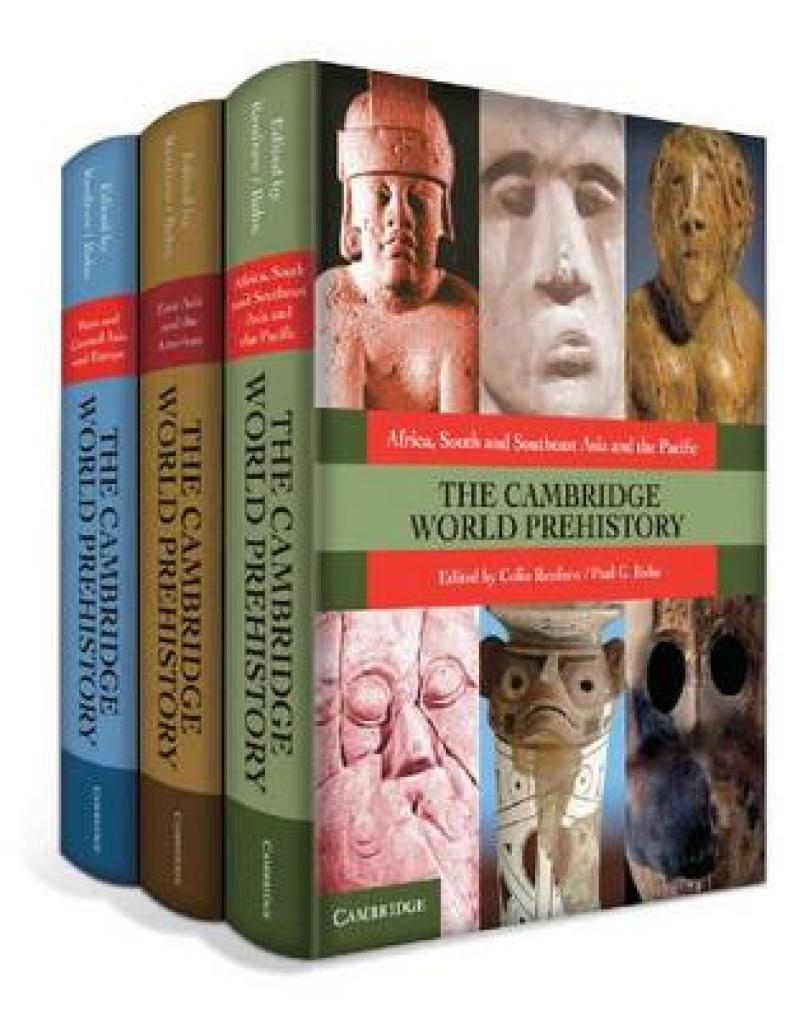The Cambridge World Prehistory provides a systematic and authoritative examination of the prehistory of every region around the world from the early days of human origins in Africa two million years ago to the beginnings of written history, which in some areas started only two centuries ago. Written by a team of leading international scholars, the volumes include both traditional topics and cutting-edge approaches, such as archaeolinguistics and molecular genetics, and examine the essential questions of human development around the world. The volumes are organised geographically, exploring the evolution of hominins and their expansion from Africa, as well as the formation of states and development in each region of different technologies such as seafaring, metallurgy and food production. The Cambridge World Prehistory reveals a rich and complex history of the world. It will be an invaluable resource for any student or scholar of archaeology and related disciplines looking to research a particular topic, tradition, region or period within prehistory.
Les mer
Volume 1. Africa, South and Southeast Asia, and the Pacific: Part I. Introduction: 1. History of world prehistory; 2. Chronology; 3. Climatic change; 4. Traditional themes; 5. DNA; 6. Language; Part II. Africa: 7. Early hominins; 8. Earliest industries; 9. The human revolution; 10. Homo fossils; 11. Middle Stone Age of Subsaharan Africa; 12. Late Stone Age of Southern Africa; 13. North Africa; 14. West Africa; 15. Central Africa; 16. Southern Africa; 17. East Africa and Madagascar and the Emergence of Northeast African states; 18. Neolithic and Predynastic Egypt; 19. Emergence of the Egyptian state; 20. Summary of dynastic Egypt; 21. Summary of Classical and post-Classical Africa; 22. Languages; Part III. South and Southeast Asia: 23. Palaeolithic of South Asia; 24. Pre-Upper Palaeolithic Southeast Asia, including Flores; 25. DNA; 26. Upper Palaeolithic of Southeast Asia; 27. Food production in India and Sri Lanka; 28. Harappan; 29. Post-Harappan; 30. Summary of historic India and Sri Lanka; 31. Food production in Southeast Asia; 32. Complex society of Southeast Asia; 33. Summary of Khmer; 34i. Indonesia; 34ii. The Philippines; 35. Languages; Part IV. The Pacific: 36. DNA; 37. Palaeolithic of Australia, New Guinea, and Bismarcks; 38. Later prehistory of New Guinea; 39. Later prehistory of Australia; 40i. Micronesia; 40ii. Melanesia; 41. Polynesia, including Hawaii and Easter Island; 42. New Zealand; 43. Languages. Volume 2. East Asia and the Americas: Part V. East Asia: 1. DNA; 2. Pre-Upper Palaeolithic; 3. Upper Palaeolithic; 4. Early sedentism of the Pacific coast and early Jomon; 5. Neolithic of Northern and Central China; 6. Neolithic of Southern China, including Tibet; 7. Early complex societies in the Yellow River and Northern China; 8. Early complex societies in Southern China, including Tibet; 9. Summary of ancient China; 10. Complex society in Japan and Korea; 11. Later prehistory of Eastern Siberia; 12. Languages; Part VI. The Americas: 13. DNA; 14. The first Americans; 15. Paleoindian and Archaic of North America; 16. Paleoindian and Archaic of Central and South America; 17. Domestication and Formative of Mesoamerica; 18. Domestication and Formative of South America; 19. Valley of Mexico; 20. Olmecs and Gulf Coast; 21. Oaxaca; 22. Maya; 23. Early coastal South America; 24. Early Horizon; 25. Early Intermediate and Middle Horizon; 26. Late Horizon; 27. Colombia, Ecuador, and Venezuela; 28. Amazonia; 29. Paraguay, Uruguay, Argentina, Chile and Patagonia; 30. Caribbean islands and neighbouring South American coast; 31. The South-West; 32. The North Pacific coast; 33 Plains and Mississippian; 34. The Atlantic coast from Florida to New England; 35. Northern North America; 36. Languages. Volume 3. Part VII. Western and Central Asia: 1. Pre-Upper Palaeolithic; 2. DNA; 3. Upper Palaeolithic; 4. Origins of sedentism and agriculture; 5. The Levant and Cyprus; 6. Western Syria; 7. Mesopotamia and Iran, the first cities; 8. Summary of Akkad onwards; 9. Anatolia up to 2000 BC; 10. Anatolia after 2000 BC; 11. The Caucasus, including Georgia and Armenia; 12. Arabia; 13. Central Asia before the Silk Road; 14. Southern Siberia; 15. Summary of the post-Classical and Islam; 16 Languages; Part VIII. Europe and the Mediterranean: 17. The Pre-Upper Palaeolithic; 18. DNA; 19. Upper Palaeolithic; 20. Upper Palaeolithic imagery; 21i. Post-Pleistocene and early food production in Southern Europe; 21ii. Post-Pleistocene and early food production in Southern Europe; 22. Post-Pleistocene and early food production in Northern Europe; 23. The Aegean; 24. Post-Neolithic of Western Europe; 25. Post-Neolithic of Central and Northern Europe, including the Scandinavian Bronze Age; 26. Post-Neolithic of Eastern Europe; 27. Summary of the Classical World; 28. Languages.
Les mer
'This detailed, lavishly illustrated three-volume set provides a unique, very readable synthesis of available contemporary data from the combined disciplines of archaeology, genetics, and linguistics to delineate the prehistoric record for each geographic section of the planet in 104 essays by contributors from 20 nations … This is a valuable resource for college, university, and museum libraries.' R. B. Ridinger, Choice
Les mer
The Cambridge World Prehistory provides a systematic and authoritative examination of the prehistory of every region around the world.
Produktdetaljer
ISBN
9780521119931
Publisert
2014-06-09
Utgiver
Vendor
Cambridge University Press
Vekt
6950 gr
Høyde
292 mm
Bredde
238 mm
Dybde
130 mm
Aldersnivå
P, U, 06, 05
Språk
Product language
Engelsk
Format
Product format
Kombinasjonsprodukt
Antall sider
2049
